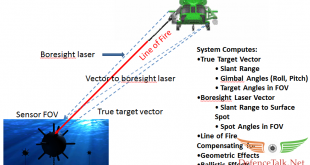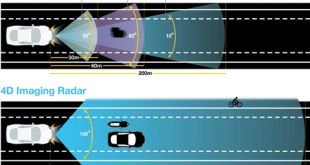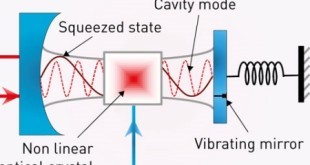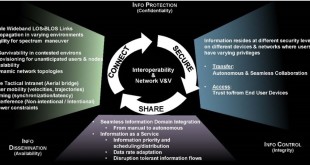Police agencies are using facial and object recognition technology for counterterrorism operations. Video footage played a key role in finding the culprits responsible for the November 2015 Paris attacks, with a CCTV video at Brussels airport used to pin down one suspect. But, the sheer volume of video content produced …
Read More »Countries developing Underwater LIDAR imaging systems for rapid wide-area anti-mine and anti-submarine operations
Currently, the most widely used technology to detect underwater objects is sound navigation and ranging (SONAR), because acoustic waves can penetrate the water depths to the bottom of the sea. SONAR also suffers from unwanted multipass echoes that are due to reflections from the surrounding terrain. Thus, high-resolution underwater imaging …
Read More »The emerging field of phonon management allow novel phononic materials and devices to control sound and heat.
The phonon is the physical particle representing mechanical vibration and is responsible for the transmission of everyday sound and heat. Understanding and controlling the phononic properties of materials provides opportunities to thermally insulate buildings, reduce environmental noise, transform waste heat into electricity and develop earthquake protection. The concept of …
Read More »Next Generation MEMS thermopile IR sensor 2.0 for Internet of Things, smart homes, environment and energy technology
In the wake of increasing electronic gadget sales, the overheating problem for battery chargers has become an increasingly common safety issue. Overheating of chargers certainly can be caused by substandard chargers, faulty batteries, or by misuse of the chargers. In worst-case scenarios the devices melt or catch fire. Unsurprisingly, this …
Read More »Russia and China testing US’s HAARP like Radar, for weather modification or jamming american submarines
The U.S. Navy and DARPA ran a facility–the High Frequency Active Auroral Research Program (HAARP) in Gakona, Alaska—before it was passed to the University of Alaska in 2014. HAARP was a research program to study ionosphere and its response to high frequency excitations from ground. “The official objective of the …
Read More »With China rapidly militarizing Quantum technologies, U.S. Army funding assessment of military potential of quantum/Electronic Warfare (EW) based threats
A global race has ensued to exploit and operationalize quantum technologies for the use of military effects. Quantum information science (QIS), field comprises four domains: Quantum Communication, where individual or entangled photons are used to transmit data in a provably secure way; Quantum Simulation, where well-controlled quantum systems are used …
Read More »Hi-Resolution 4D Imaging Radar is emerging as complementary sensor to LIDAR for fully autonomous cars
Although the hardware and software technology for fully autonomous cars is ready today, the cars themselves may still be a decade or more away, vehicle experts said at the recent North American International Auto Show in Detroit. The challenge for automakers and suppliers lies in test and validation, as well …
Read More »On Chip squeezed light sources for highly accurate Quantum navigation sensors and quantum key distribution.
GPS hacking and spoofing have made headlines around the world in recent years, from researchers successfully hacking a yacht’s navigation to bring it off its programmed course to the discovery of dozens of Russian ships whose GPS signals indicated they were on land when they were in fact out on …
Read More »Ultra-thin membrane Flexible Lasers could be used as wearable CBRN sensors, Chip spectroscopy to data-communication
Organic semiconductors enable the fabrication of a range of lightweight and mechanically flexible optoelectronic devices. Organic LEDs, solar cells, and field-effect transistors are now routinely made in bendable or even stretchable formats and with extremely low specific weights. Most organic semiconductor lasers, however, have remained rigid and relatively bulky …
Read More »USAF requires Seamless multi-domain communications “network of networks” fabric across C2ISR enterprise for implementing multi domain operations
Developing and delivering air superiority for the highly contested environment in 2030 requires a multi-domain focus on capabilities and capacity, according to the unclassified version of the Air Superiority 2030 Flight Plan. “After 25 years of being the only great power out there, we’re returning to a world of great …
Read More » International Defense Security & Technology Your trusted Source for News, Research and Analysis
International Defense Security & Technology Your trusted Source for News, Research and Analysis









